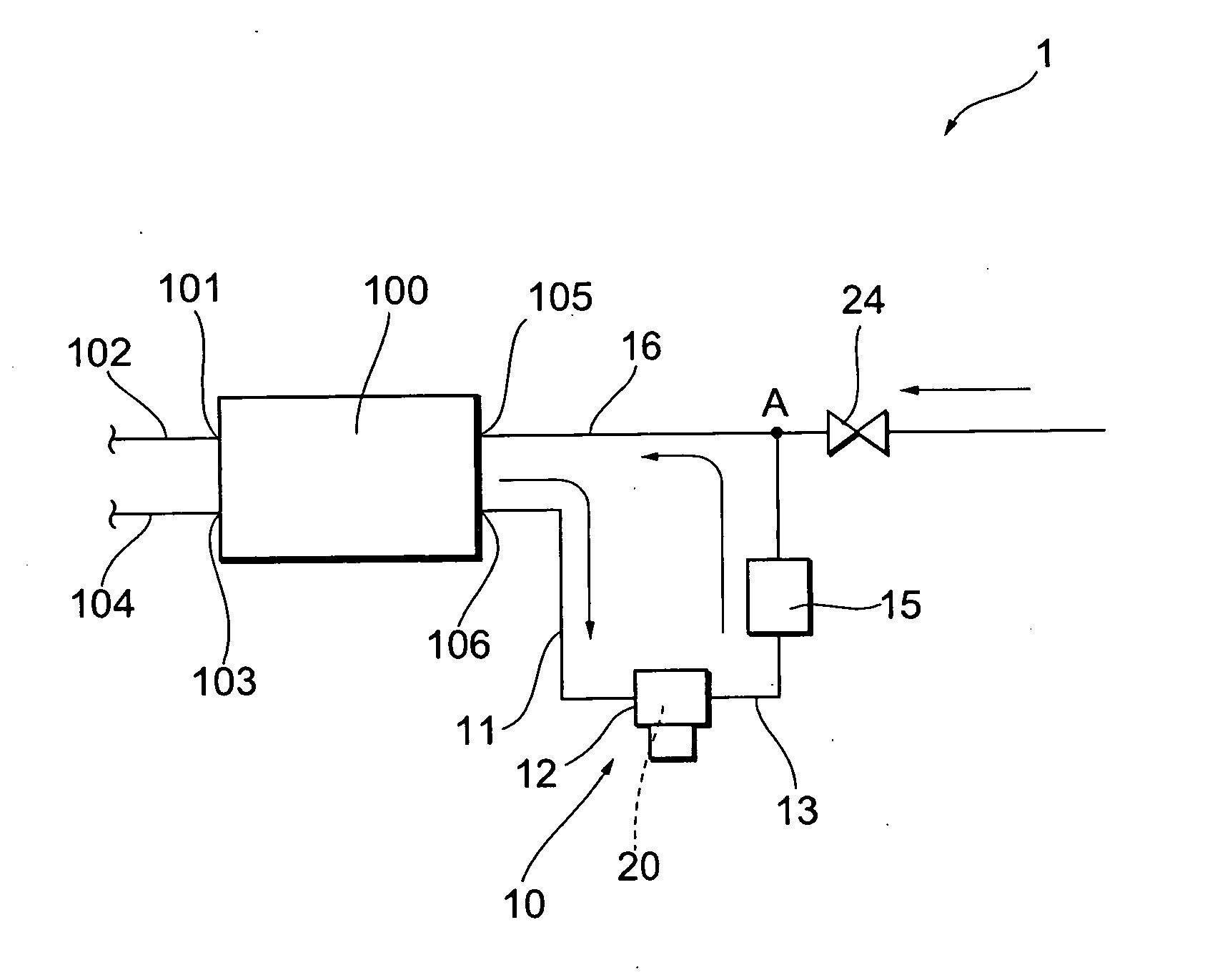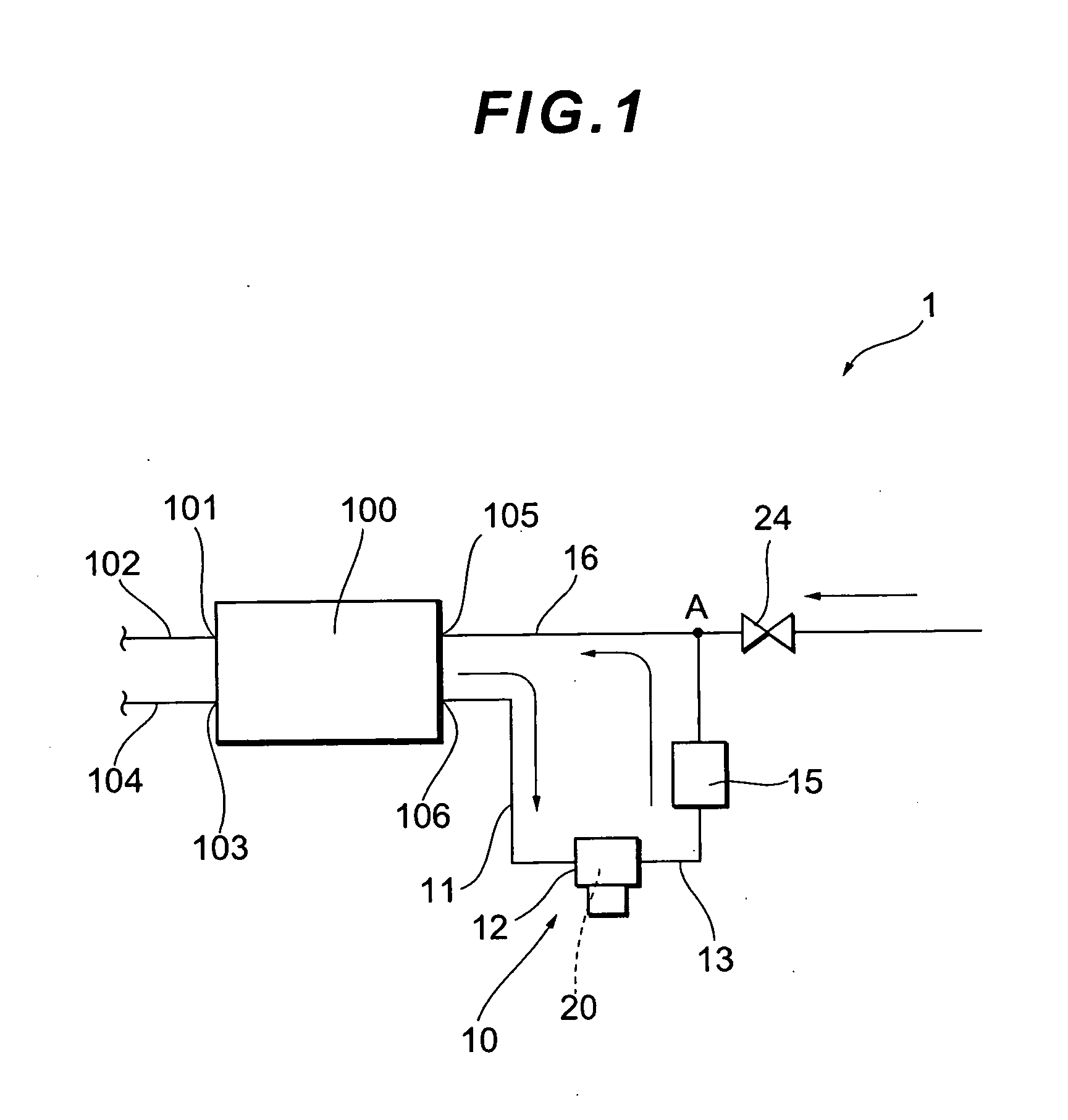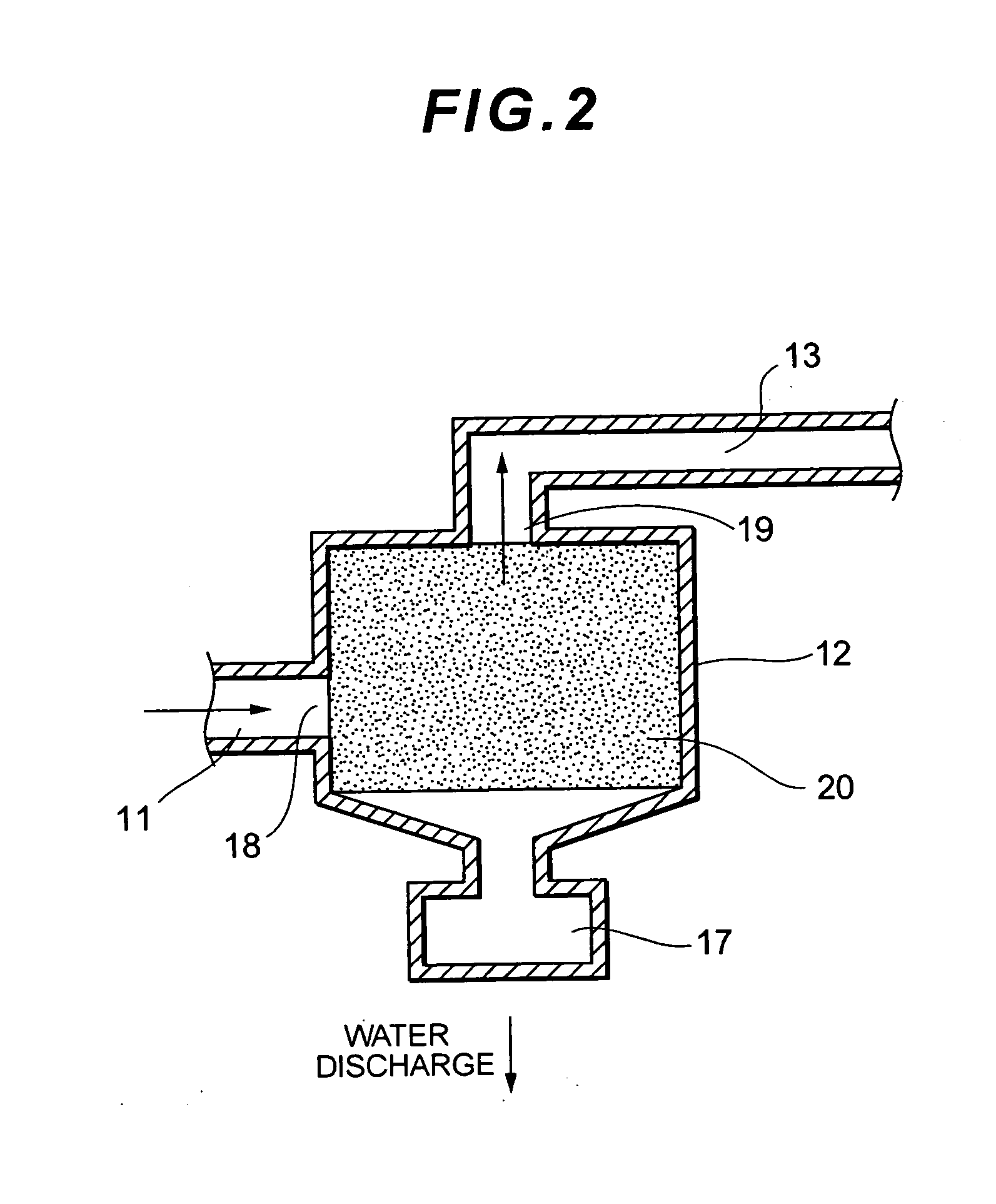Fuel Cell System
- Summary
- Abstract
- Description
- Claims
- Application Information
AI Technical Summary
Benefits of technology
Problems solved by technology
Method used
Image
Examples
Embodiment Construction
[0065] Preferred embodiments of this invention will be described below in detail with reference to the attached drawings. The embodiments described below are for the purpose of describing this invention, but the invention is not limited only to these embodiments. Accordingly, this invention can be implemented in various ways unless the utilizations depart from the gist of the invention.
[0066]FIG. 1 is a schematic configuration diagram of a fuel cell system according to an embodiment of the invention. FIG. 2 is an enlarged cross-sectional view schematically showing the configuration of the area around a gas-liquid separator and an ion exchange resin member of the fuel cell system in FIG. 1.
[0067] In this embodiment, a circulation passage provided in a hydrogen circulation system will be described as an example of an exhaust gas passage connected to a fuel cell to allow an exhaust gas from the fuel cell to flow through.
[0068] As shown in FIG. 1, a fuel cell 100 of a fuel cell syste...
PUM
 Login to View More
Login to View More Abstract
Description
Claims
Application Information
 Login to View More
Login to View More - R&D
- Intellectual Property
- Life Sciences
- Materials
- Tech Scout
- Unparalleled Data Quality
- Higher Quality Content
- 60% Fewer Hallucinations
Browse by: Latest US Patents, China's latest patents, Technical Efficacy Thesaurus, Application Domain, Technology Topic, Popular Technical Reports.
© 2025 PatSnap. All rights reserved.Legal|Privacy policy|Modern Slavery Act Transparency Statement|Sitemap|About US| Contact US: help@patsnap.com



